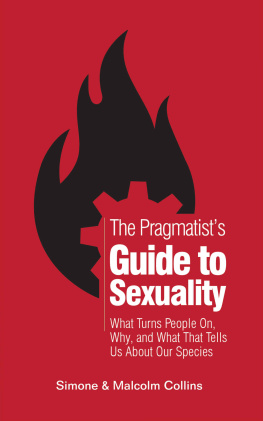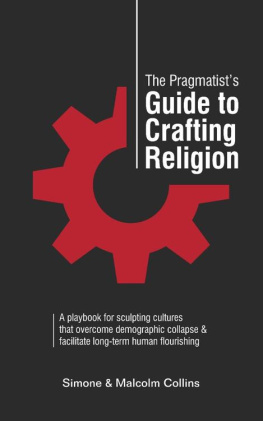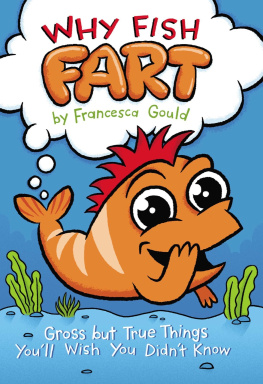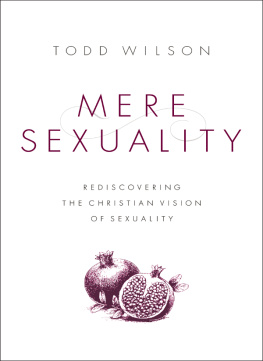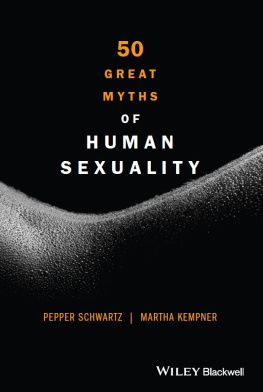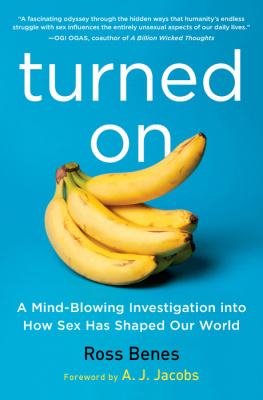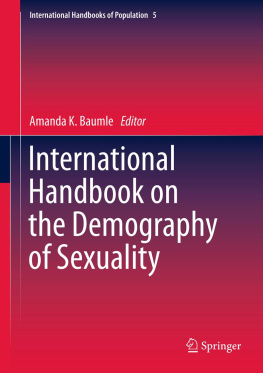We dedicate this book to the anonymous netizens who spent tireless hours writing kinky fanfictions and drawing hentai inspired by obscure turn ons. You collectively illustrated a puzzle so bizarre, it compelled us to take a crack at solving it, which ultimately granted us a clearer understanding of the human condition.
This book is also dedicated to our current and future children with the knowledge that, by publishing this book, we have made their dating experiences markedly more challenging and may have definitively made sex uncool for them.
An Introduction to Sexuality
W hen putting together The Pragmatists Guide to Relationships, we decided to include a short chapter on arousalwhat turns people on. That single chapter eventually became longer than all of the other chapters in the book combined.
As we explored the available research and data on arousal systems, it became clear to us that the data does not match the social schemas into which researchers are cramming their findings. Study after study seems to be shoving a square peg into a round hole.
To really make sense of how humans process sexual stimuli, we had to distance ourselves from common social conventions explaining how human sexuality works and rethink arousal pathways from the ground up. To that end, we put together this book. It features data-driven theories on how human sexuality actually appears to operate while avoiding ideologically driven research and lines of thought.
We reached out to around a hundred professional sex therapists to sanity check our findings and either added notes when their experiences conflicted with our theories or updated our theories to incorporate additional information they presented.
Societys Corrupted Framework for Human Arousal
Many inaccurate assumptions regarding human arousal stem from an idea that is now deeply ingrained in the Western consciousness: The concept that, to some extent, a persons arousal patterns reveal something about their personal identitywho they are deep inside.
It is no mystery how this concept came to be. Individuals with non-socially condoned arousal patterns found themselves oppressed. In response to this oppression, these people found solidarity in each others company, forming communities around shared life experiences of oppression. Through ostracization, unique cultures began to evolve within these communities. This type of cultural drift is common within any ostracized or oppressed group allowed to congregate in private. Through involvement in these unique cultures, people began to identify their arousal patterns with their cultural identity and that cultural identity with their personal identitiesleading to the unfortunate societal shorthand in which an arousal pattern is seen as a major part of a person's identity.
The largest and most influential of the communities referenced here is the lesbian/gay/bi community, however a similar phenomenon has occurred within a number of groups (such as the BDSM community). Essentially, these communities were ostracized long enough that they formed distinct cultural norms, which allowed individuals to associate their sexuality with a cultural identity. By proxy, society then began to associate sexuality in general with personal identity.
This is all fine and good when a guy who is aroused only by male characteristics fits into the category of gay and feels socially compelled to make gay community affiliation part of his identity, thereby gaining a feeling of acceptance in an otherwise hostile world. But what about a woman who is so physiologically aroused during her own rape that she orgasms?
As it happens, this is a fairly common occurrence, with 4% to 5% of reported rape cases citing it, and with estimations of the actual frequency of physiological arousal during rape being even higher (to put that 4% to 5% in perspective: A Gallup poll in 2007 suggested that 4.5% of Americans identified as gay). It is also not unheard of for a woman who has been raped to find herself mentally aroused when reflecting on the experience.
Do these occurrences mean the rape someone experienced was any less traumatic and awful? Of course not. Do women who orgasm when being rapedor who become aroused while reflecting on the experienceneed to incorporate that aspect of their arousal pathways into their identities? Of course not.
Pragmatically speaking, the fact that something arouses a person neither indicates that they want that thing to happen nor necessitates that they must ideologically approve of it. Some people choose to incorporate their arousal pathways into the way the conceptualize their identity and that personal choice is often something to be lauded. Nevertheless, we run into problems when we treat it as a cultural mandate that a persons sexuality must indicate something about their identity.
Denying a persons sexual identity can lead to depression and even suicide, however flippantly mandating a persons sexual identity based on their arousal patterns can trigger the same outcomes.
The cascade of problems caused by people conflating arousal patterns with personal identities does not end with the suffering of those pressured to accept identities they do not feel fit them. Any exploration of human arousal patterns that grants special treatment to specific patterns of arousal just because large oppressed communities exist around them is bound to create a lens that distorts the underlying mechanisms driving human arousal.
This distorted lens may lead someone studying human sexuality to ask: Where are you on a spectrum from straight to gay? This question would miss a pattern we found in our data suggesting that people's arousal systems are not bundled by the gender of whatever it is that turns them on: 4.5% of men find the naked male form aversive but penises arousing, while 6.7% of women find the female form arousing, but vaginas aversive.
Using simplified community identifications like the gay-straight spectrum to investigate how and why arousal patterns develop is akin to studying historic human migration patterns by distributing a research survey asking respondents to report their position on a spectrum from white to person of color. Yes, person of color, like the concept of gay, is a useful moniker to understand the life experiences of a person, but a persons place on a white to person of color spectrum tells us little about their ethnicity, just as a persons place on a scale of gay to straight tells us little about their underlying arousal patterns.
The old way of looking at arousal limits our ability to describe sexuality to a grey scale. We miss that there is no such thing as attraction to just females, but rather a vast array of arousal systems that react to stimuli our society typically associates with females including things like vaginas, breasts, the female form, a gate associated with a wider hip bone, soft skin, a higher tone of voice, the gender identity of female, a person dressed in female clothing, and female gender roles. Arousal from any one of these things correlates with the others, but this correlation is lighter than a gay-straight spectrum would imply. Our data shows it is the norm for a person to derive arousal from only a few of these stimuli sets and not others. Given this reality, human sexuality is not well captured by a single sexual spectrum.

